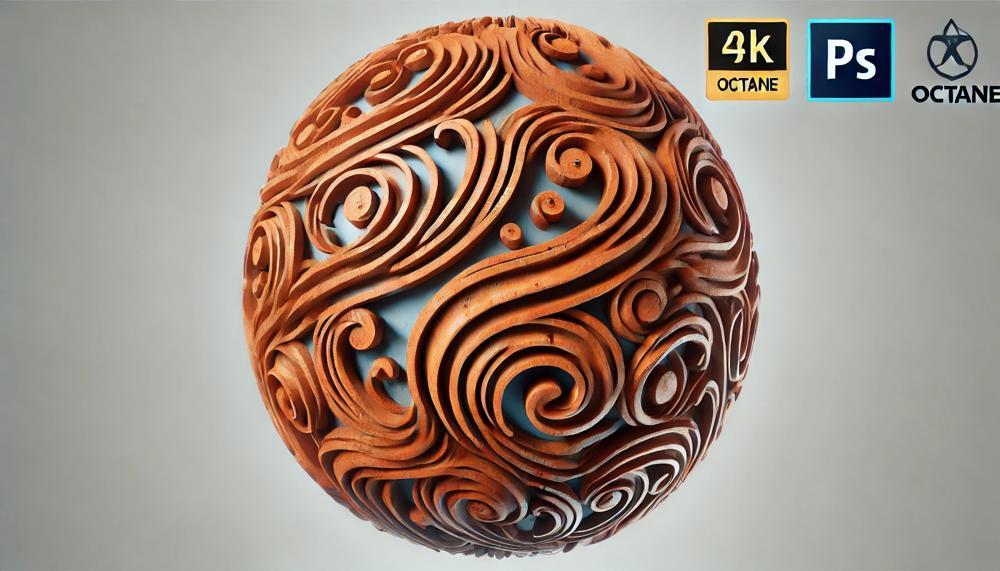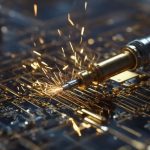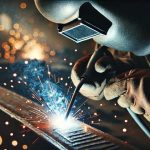Welding corten steel might sound like a task reserved for the metalwork maestros, but with the right guidance, it’s an art that many can master. This robust material, known for its distinctive rusty appearance and impressive weathering properties, requires a unique approach when it comes to welding. It’s not just about joining two pieces of metal; it’s about understanding the character of corten and how it reacts under the torch.
In this blog post, we’re diving deep into the world of welding corten steel, stripping back the layers to reveal the secrets behind successful welds. Here’s what you’re about to uncover:
- The Basics of Corten Steel: What makes it different from your everyday steel.
- Preparation Tips: How to get corten steel ready for a strong, durable weld.
- Choosing the Right Welding Method: From MIG to TIG, finding the best fit for your project.
- Welding Techniques: Expert advice to enhance your welding quality and efficiency.
- Post-Welding Care: Ensuring your weld stands the test of time against the elements.
Whether you’re a seasoned welder or a curious novice, this guide promises to equip you with the know-how to tackle corten steel welding projects with confidence. Let’s ignite our torches and delve into the details.
Contents
- 1 What is Corten Steel?
- 2 Corten Steel Grades
- 3 Corten Steel Welding
- 4 Welding Corten Steel to Mild Steel
- 5 Welding Corten Steel to Stainless Steel
- 6 TIG-MIG Welding Corten Steel
- 7 What do you weld A588 Steel With?
- 8 Can you weld Corten steel with 7018?
- 9 Is corten steel mild steel?
- 10 Corten Steel Strength and Weakness
- 11 Conclusion
What is Corten Steel?
Corten Steel, officially termed as weathering steel, is distinguished by its ability to form a stable, rust-like appearance once exposed to the weather. The formation of this protective layer, which acts as a shield against further corrosion, is due to its unique composition.
Unlike traditional steel, Corten Steel incorporates specific alloying elements such as copper, chromium, and nickel, enhancing its resistance to atmospheric corrosion.
Key Differences Between Corten Steel and Other Steels
| Feature | Corten Steel | Traditional Steel |
|---|---|---|
| Composition | Alloyed with copper, chromium, and nickel | Primarily iron with carbon |
| Appearance | Develops a rust-like, protective oxide layer | Requires paint or coating for corrosion resistance |
| Corrosion Resistance | High due to protective oxide layer | Dependent on protective coatings |
| Application | Structures requiring minimal maintenance, like bridges | General construction requiring paint for corrosion protection |
| Welding | Can be welded with standard electrodes; special considerations for color matching | Weldability depends on carbon content; generally requires no special considerations for color |
Corten’s unique alloying makes it a prime choice for applications where robustness against the elements and minimal maintenance are paramount. Its ability to naturally form a protective layer eliminates the need for paint, which is a necessity for traditional steels to prevent rust. This not only offers an aesthetic advantage but also contributes to its sustainability by reducing maintenance costs and environmental impact associated with paint.
Additionally, when welding Corten Steel, specific practices are followed to ensure the welds share the same corrosion-resistant qualities, including the use of certain filler metals that complement its chemical composition.
Corten Steel Grades
Corten steel, known for its weather-resistant properties, comes in various grades, each affecting the welding process uniquely. Here’s a concise exploration into the primary grades and their welding nuances:
| Grade | Composition Highlights | Welding Considerations |
| ASTM A588 | High in copper, chromium, and nickel | Requires specific welding methods; manual and automatic welding both viable. Low heat input recommended. |
| ASTM A606 Type 4 | Richer in phosphorus and copper | Advises low hydrogen electrodes and preheating before welding to enhance weldability. |
| ASTM A847 | High-strength, low-alloy steel | Not recommended for welding due to its complex chemical composition and high strength. |
| ASTM A709 Grade 50W | Contains copper for corrosion resistance | Welding not recommended owing to its high strength; poses a risk of compromising structural integrity. |
When tackling corten steel in a welding project, it’s crucial to peg down the exact grade at play. Each variety not only carries its unique alloy composition but also dictates a specific welding roadmap to follow. For instance, ASTM A588, a common sight in construction, demands a welding approach that pays heed to low heat to fend off burn-through and distortion. Conversely, the ASTM A606 Type 4, with its elevated phosphorus and copper levels, beckons for preheat measures to avert cracking post-weld.
Astutely selecting electrodes and adjusting pre-weld heating based on the corten grade ensures the integrity and durability of the weld. Bluntly ignoring these specifics could spell disaster, leading to structural failures and diminished corrosion resistance.
Corten Steel Welding
Welding Corten Steel requires a nuanced approach, blending art and precision to ensure the integrity and appearance of this distinctive material are preserved. Here’s what to keep in mind:
Key Considerations:
- Understanding Corten Steel: Recognize the unique properties of Corten Steel, such as its ability to form a protective rust layer that resists atmospheric corrosion.
- Selecting the Right Filler Metal: Choose filler metals that complement the chemical composition of Corten Steel, ensuring the weld matches the strength and corrosion resistance of the base metal.
- Preheat and Interpass Temperatures: Adhere to recommended preheat and interpass temperature guidelines to mitigate the risk of cracking in the weld area.
- Welding Technique: Employ the appropriate welding technique and parameters to reduce the potential for warping and to maintain aesthetic consistency.
- Post-Weld Cleaning: Implement thorough post-weld cleaning to remove any contaminants that may affect the development of the protective patina.
Detailed Considerations in a Table:
| Aspect | Detail | Recommendation |
| Filler Metal | Chemistry matching | Use filler metals with similar alloy content to Corten, like ER80S-Ni1 for multiple passes. |
| Preheat and Interpass Temp | Temperature control | Follow the guidelines for Group II steels, adjusting for thickness and ambient conditions. |
| Welding Technique | Execution | Opt for low heat input and controlled techniques to avoid altering the material’s protective layer. |
| Post-Weld Treatment | Cleaning | Ensure all slag and spatter are removed to enable uniform patina formation. |
| Color Matching | Aesthetic importance | Select filler metals that aid in achieving a patina similar to that of the base metal for visual consistency. |
Each welding project using Corten Steel is as unique as the material itself.
Welding Corten Steel to Mild Steel
Welding Corten Steel to Mild Steel involves a meticulous process to ensure a robust and enduring bond between these two distinct materials. The key lies in the preparation, the choice of welding method, and the selection of appropriate filler material, all while managing the welding conditions to prevent potential issues such as cracking or weakening of the weld.
Preparation and Cleaning
| Cleaning Corten Steel | Use a wire brush for stainless or galvanized steel to remove surface contaminants. | Ensures optimal fusion by removing impurities that could hinder the welding process. |
| Cleaning Mild Steel | Grind, sand, or use a degreaser to clean the surface thoroughly. | Prepares a clean, receptive surface for welding. |
Welding Method and Filler Material
| Welding Techniques | GMAW (MIG) or GTAW (TIG) | Choose based on the specific requirements of the job and the welder’s expertise. |
| Filler Material | Low alloy filler | Matches Corten’s composition, minimising the risk of weld cracking and ensuring durability. |
Welding Precautions

- Heat Management: Excessive heat can warp the materials. Control heat input and use intermittent welding to allow cooling.
- Preheat Treatment: Heating Corten steel to a recommended temperature before welding reduces the risk of cracking.
When fusing Corten Steel to Mild Steel, it’s crucial to not only select the right materials and methods but also to proceed with a keen eye on the specifics. For example, when cleaning, it’s not just about making the surface look clean; it’s about ensuring there’s no microscopic residue that could impair the weld. Similarly, choosing between GMAW and GTAW isn’t just a matter of preference. Each method has its unique advantages in different scenarios, requiring an informed choice to ensure the best possible weld.
The choice of filler material might seem like a minor detail, but it’s actually a cornerstone of welding Corten to Mild Steel. The low alloy filler isn’t just another component; it’s a unifier that bridges the inherent disparities between Corten and Mild Steel, ensuring the weld doesn’t just hold, but lasts.
Taking these precautions seriously isn’t just about following protocol; it’s about respecting the materials and the craft. Welding Corten to Mild Steel isn’t just a task.
Welding Corten Steel to Stainless Steel
Answer: Absolutely, Corten steel and stainless steel can be united through welding, albeit with a few critical considerations to ensure the joint is robust and enduring. Let’s delve into the essentials for a successful weld between these distinct metals.
Key Considerations for Welding Corten to Stainless Steel
| Cleaning | Both metals must be impeccably cleaned to remove any contaminants that might jeopardize the weld’s integrity. |
| Welding Method | TIG welding stands out as the preferred method, offering precise control over heat and ensuring the metals don’t overheat. |
| Filler Material | Selecting a filler that closely mirrors the base metals in chemical composition is pivotal for a strong, lasting weld. |
| Preheating | A pre-weld heat treatment can significantly diminish the risk of cracking, a common concern when welding dissimilar metals. |
Deep Dive into Welding Techniques and Materials
To navigate the challenge posed by their differing compositions—Corten’s higher carbon and copper content against stainless steel’s abundance of nickel and chromium—precision is key. The goal is to avoid common pitfalls such as cracking or warping that can arise from improper technique or materials.
A strategic approach involves meticulous surface preparation, selecting a filler that forms a harmonious bridge between the two metals, and controlling the welding environment, including heat input, to prevent any damage to the metals’ structural integrity.
By adhering to these guidelines, the fusion of Corten and stainless steel not only becomes feasible but also produces a joint that stands the test of time, harnessing the unique properties of each metal to create structures of both strength and aesthetic appeal.
TIG-MIG Welding Corten Steel
When it comes to welding Corten steel, the choice between TIG (Tungsten Inert Gas) and MIG (Metal Inert Gas) welding hinges on several key factors, including precision, efficiency, and material thickness. Here’s a breakdown of the differences to guide welders in choosing the most suitable method for their specific project needs:
| Aspect | TIG Welding | MIG Welding |
| Process Nature | Manual, requiring a high level of skill. | Semi-automatic, easier to learn and use. |
| Equipment Complexity | Requires a TIG torch, power source, and shielding gas. Filler material is fed by hand. | Uses a MIG gun, power source, and a mix of argon and CO2 as shielding gas. The wire electrode serves as the filler. |
| Control and Precision | Offers superior control over heat input and filler material, ideal for thin Corten steel. | Less precise than TIG, but faster for welding thicker Corten steel sections. |
| Weld Appearance | Produces clean, precise welds; preferred for high-quality finish requirements. | Creates wider, shallower welds; may require cleanup for aesthetic purposes. |
| Suitable Thickness | Better for thinner materials due to precise heat control. | More efficient for thicker materials, offering quicker welds over larger areas. |
| Heat Input | Lower, reducing the risk of warping or distorting the metal. | Higher, which can be advantageous or detrimental depending on the project. |
In essence, TIG welding shines in situations that demand meticulous detail and finesse, particularly with thinner Corten steel, where control over the weld pool and heat input is crucial. Its manual nature requires a steady hand and a keen eye for detail, qualities that, once mastered, yield unparalleled weld quality and aesthetic appeal.
Conversely, MIG welding offers a more forgiving and efficient approach, especially beneficial when dealing with thicker pieces of Corten steel. Its ability to quickly fill larger joints and cover more ground makes it a go-to for projects demanding speed without sacrificing strength. The trade-off, however, lies in the potential for less precision and the necessity for additional clean-up in some cases.
Choosing between TIG and MIG welding for Corten steel thus depends on the specific demands of the welding task at hand, balancing factors like material thickness, required precision, and project timeline.
What do you weld A588 Steel With?
Welding A588 steel, commonly known as Corten or weathering steel, demands specific techniques and materials to ensure the structural integrity and aesthetic appearance of the welded joints. A588 steel is designed to build up a rust-like patina that protects the steel from further corrosion, making it ideal for outdoor structures.
Best Welding Materials for A588 Steel
The ideal welding materials for A588 steel need to cater to its chemical composition and mechanical properties, ensuring that the weld area is as resistant to atmospheric corrosion as the base material. Here’s a detailed look at the recommended filler materials:
| Filler Material | Type | Applications |
|---|---|---|
| E8018-W | SMAW (Shielded Metal Arc Welding) | General welding, provides matching atmospheric corrosion resistance. |
| ER80S-W | GTAW (Gas Tungsten Arc Welding) / TIG | Precision welding for thinner sections, offers superior corrosion resistance. |
| E80T1-W | FCAW (Flux-Cored Arc Welding) | Outdoor welding with variable weather, high strength, and corrosion resistance. |
| ER70S-6 | GMAW (Gas Metal Arc Welding) / MIG | Less critical cosmetic applications, not matching in corrosion resistance but suitable for single passes. |
Key Considerations
- Preheat and Interpass Temperatures: Follow the guidelines for Group II steels under AWS D1.1, especially for thicker sections, to avoid cracking.
- Atmospheric Corrosion Resistance: Choose filler metals alloyed with nickel, copper, and chromium to mimic A588’s corrosion-resistant properties.
- Match the Tensile Strength: Ensure the filler material matches or exceeds the base metal’s tensile strength, particularly for structural applications.
Welding A588 steel isn’t just about joining two pieces of metal; it’s about preserving the steel’s built-in resistance to weather and its unique look. By selecting the right filler material, you ensure that your project stands strong and maintains its aesthetic integrity over time.
Can you weld Corten steel with 7018?
Yes, you can indeed weld Corten steel with a 7018 electrode. Now, let’s break down the finer points about why the 7018 is a viable option for Corten steel and delve into other suitable alternatives, all aimed at achieving robust and enduring welds in this distinct material.
Understanding Corten Steel and 7018 Welding Rod
Corten steel, known for its weather-resistant qualities and distinct rustic appearance, poses unique welding challenges. The 7018 welding rod, characterized by its low-hydrogen, all-position capabilities, is apt for tackling Corten’s demands, ensuring clean, strong, and durable welds.
Optimal Welding Rods for Corten Steel
While the 7018 rod is a competent choice, exploring alternatives that align with Corten’s peculiarities enhances welding outcomes. Below is a table showcasing recommended rods and their attributes:
| Welding Rod | Key Features | Suitability for Corten |
| E7018 | Low hydrogen, all-position, high deposition | Yes, for general welding needs |
| E8018-W2 | Higher nickel and copper, atmospheric corrosion resistance | Yes, for superior corrosion resistance |
| E8010-G | High tensile strength, excellent corrosion resistance | Yes, for strength in harsh weather |
Choosing the Right Rod
Selecting the appropriate welding rod hinges on the project’s demands:
- E7018: Ideal for general welding, providing clean finishes and sturdy welds.
- E8018-W2: The go-to for projects demanding enhanced corrosion resistance.
- E8010-G: Suited for structures exposed to severe weather, offering unparalleled strength and durability.
Is corten steel mild steel?
Corten steel is not mild steel; it’s a group of steel alloys that were developed to eliminate the need for painting, forming a stable rust-like appearance after several years’ exposure to weather. The distinguishing characteristic is its composition, which leads to the creation of a protective layer of rust that shields the steel from further corrosion.
When it comes to welding techniques, there are specific nuances that differentiate corten from mild steel. Here’s a straightforward breakdown:
| Aspect | Corten Steel | Mild Steel |
|---|---|---|
| Filler Material | Requires a specific filler wire that matches the chemical composition of Corten steel to ensure the weld zone develops the same atmospheric corrosion resistance. | Typically, a standard filler wire is sufficient, as matching the corrosion resistance of mild steel is not a concern. |
| Pre-Welding Preparation | Needs thorough cleaning to remove the weathered layer, ensuring proper fusion. | Requires standard cleaning to remove any surface impurities or oils. |
| Post-Welding Treatment | May require specific treatments or weathering period to restore the protective rust layer over the weld zone. | Usually does not need any special treatment after welding beyond standard practices to prevent immediate rust. |
In essence, while the core welding techniques remain similar — adhering to good welding practices, the specifics such as filler material selection and pre/post-welding treatments highlight the difference between welding corten and mild steel.
Corten Steel Strength and Weakness
Corten steel, distinguished by its high resistance to atmospheric corrosion and aesthetically striking rusted appearance, presents a mixed bag of benefits and challenges in welding.
Here’s a detailed breakdown of its primary strengths and weaknesses in this realm:
Strengths
- High Tensile Strength: Corten’s robustness enables it to bear considerable stress, making it stellar for structural demands where durability is key.
- Protective Rust Layer: Its unique chemical makeup allows it to develop a protective rust patina, which guards against further corrosion and eliminates the need for constant upkeep.
- Low Maintenance: Thanks to its corrosion resistance, there’s no need for repetitive painting or treatments, positioning it as a cost-effective solution for long-term projects.
Weaknesses
- Heat-Affected Zone Cracking: The high carbon content raises the risk of cracking in the weld bead due to hydrogen embrittlement. Proper welding techniques and material pre-heating are essential countermeasures.
- Limited Availability: Its specialized composition means corten may not be easily found in all desired shapes and sizes, potentially hiking up costs due to the need for custom fabrication.
Detailed Analysis
| Aspect | Strength | Weakness |
| Tensile Strength | Can handle significant stress and pressure | – |
| Corrosion Resistance | Develops a protective layer that guards against further corrosion | – |
| Maintenance | Requires less upkeep due to natural corrosion resistance | – |
| Welding Process | – | Susceptible to HAZ cracking; demands careful welding techniques |
| Availability | – | May not be readily available in all forms; custom fabrication might be necessary |
In essence, while corten steel stands out for its strength, durability, and low maintenance, it demands a skilled hand in welding to navigate the risk of HAZ cracking and accommodate its less common availability.
Conclusion
Welding Corten steel, a task that may initially appear to be the exclusive domain of metalworking experts, is in fact an achievable endeavor for many, given the correct guidance.
This unique material, prized for its weathered look and exceptional durability against the elements, necessitates a specialized approach to ensure the integrity and longevity of your welds. The key to mastering Corten welding lies in understanding its distinctive characteristics and how they influence the welding process.
From selecting the appropriate filler metals that harmonize with Corten’s chemical makeup to applying specific techniques that mitigate the potential for cracking, every step is crucial. Emphasizing preparation, method choice, and post-welding care allows for not only functional but also aesthetically pleasing results.
Armed with this understanding, welders are well-equipped to take on projects with Corten steel, ensuring structures that are not only strong and durable but also striking in appearance.





